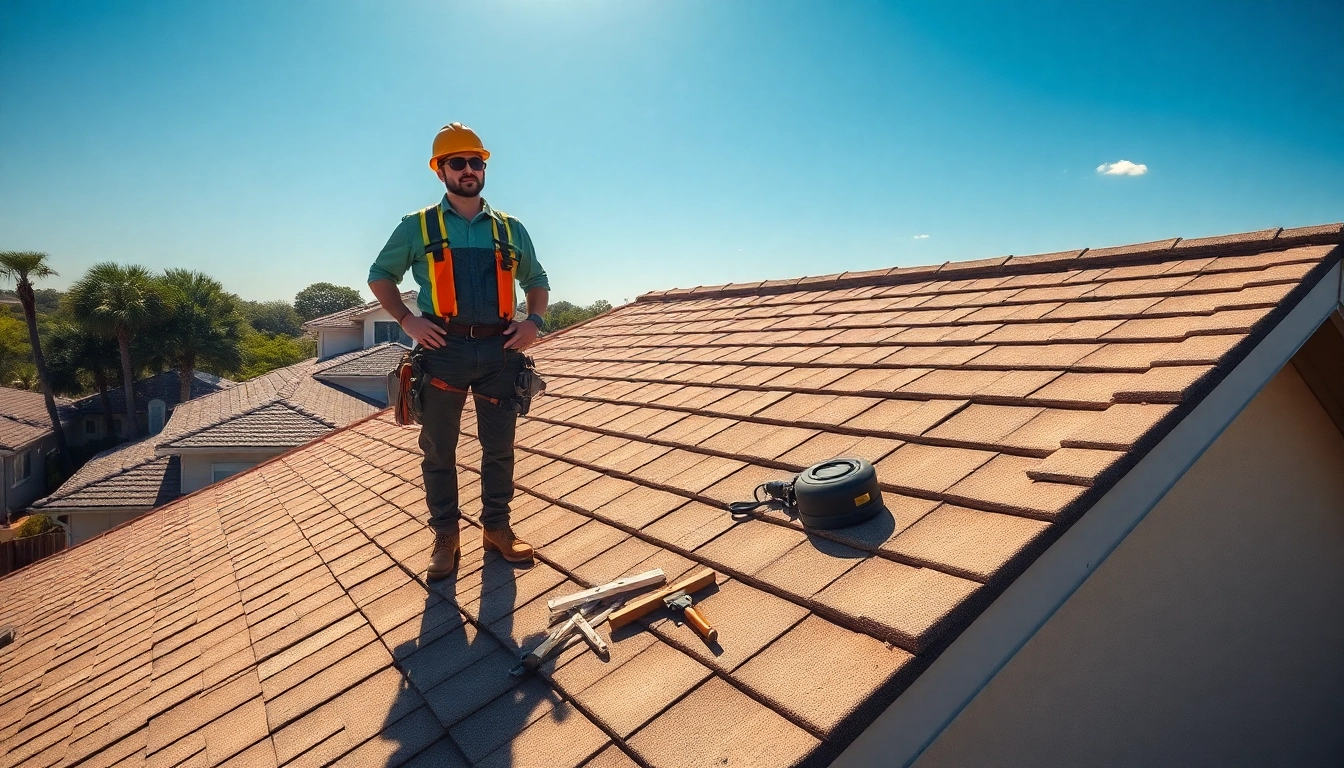Understanding Your Roofing Needs
Your roof is your home’s first line of defense against the elements. To make the best decisions regarding repairs or replacements, you must understand your unique roofing needs. Whether you’re dealing with a leaky roof or considering an upgrade to a more resilient material, knowing what to look for will save you time and money in the long run. This guides you through identifying common roof issues, choosing materials, and budgeting for your roofing projects.
Identifying Common Roof Issues
There are several common problems that homeowners encounter with their roofs. Recognizing these issues early can prevent more extensive damage and costly repairs.
- Leaks: One of the most prevalent issues. Water stains on ceilings or walls can indicate a leak.
- Missing Shingles: Strong winds can blow off shingles, opening your roof to leaks.
- Pooled Water: A flat roof can accumulate water after rainfall, leading to leaks and mold growth.
- Granule Loss: The loss of granules from shingles indicates they may need to be replaced.
- Birds or Insects: Nesting can signal existing damage or create new issues.
Being aware of these signs allows for prompt action, safeguarding your investment. If you’re unsure about your roof’s condition, consulting with the best roofing company in Austin can provide clarity and guidance.
Choosing the Right Roofing Material
Your choice of roofing material significantly affects your roof’s longevity, aesthetics, and energy efficiency. Here are some options:
- Asphalt Shingles: Cost-effective and easy to install. They come in various colors and styles.
- Metal Roofing: Highly durable and energy-efficient. Ideal for areas with extreme weather.
- Tile Roofing: Provides a distinctive appearance and is long-lasting. Suitable for dry climates.
- Flat Roofs: Common in commercial buildings, they require specific materials to handle water pooling.
When selecting a material, consider factors such as weather, aesthetics, budget, and local building codes. Each option has its pros and cons, and the right choice depends on your specific needs.
Assessing Your Budget for Roofing Projects
Budgeting effectively for your roofing project means evaluating not only the upfront costs but also potential future expenses. Here’s how to get started:
- Determine Your Needs: Assess the extent of repairs needed or the cost of a new roof.
- Research Material Costs: Different materials come with varying costs; do your research to see what’s feasible.
- Consider Labor: Professional installation adds to the cost, but DIY can lead to unqualified work if you’re not experienced.
- Plan for Unexpected Expenses: Always set aside a contingency fund for unplanned repairs or adjustments needed during the project.
Creating a comprehensive budget will help ensure that you’re financially prepared and that your roofing project stays on track.
Benefits of Hiring the Best Roofing Company in Austin
Choosing the wrong roofing contractor can lead to subpar work that doesn’t last. Hiring a reputable company like the best roofing company in Austin brings numerous benefits, from expert heavy lifting to exceptional quality control.
Expertise and Experience
One of the significant advantages of hiring professionals is their expertise. An experienced roofing company has likely encountered just about every roofing issue imaginable.
Experts are familiar with local building codes and can provide compliance assurance, reducing the risk of penalties. Additionally, seasoned contractors can offer innovative solutions tailored to your specific roofing challenges.
Quality Workmanship and Materials
Hiring a top roofing company ensures you receive high-quality workmanship. Professionals have access to superior materials and techniques that can enhance your roof’s durability and aesthetic appeal:
- Superior Materials: Top companies partner with reputable manufacturers, giving you access to high-quality materials.
- Advanced Techniques: They use the latest technology and techniques, improving the installation process and the longevity of your roof.
Such quality generally leads to less maintenance and repair down the line.
Warranties and Assurance
Reputable roofing companies often offer warranties on both materials and workmanship, providing you peace of mind. This means if any issues arise within a specified period, you won’t have to bear the costs of repairs.
Additionally, a company with a solid reputation in the community is more likely to stand by their work and honor their warranties. This reliable backup can be invaluable to homeowners.
Comparative Analysis of Local Roofing Companies
With so many options available, it’s essential to conduct a thorough comparison of local roofing companies. Evaluating these factors will help you make an informed decision on which company to hire.
Evaluating Customer Reviews and Ratings
Online reviews and ratings give insight into a company’s reputation. Websites like Yelp and Google Reviews compile customer experiences that can inform your choice. Pay attention to:
- The overall star rating
- Frequency and types of issues raised
- Responses from the company to customer concerns
Look for patterns in the reviews. If multiple reviews highlight a specific problem, it might be an area to consider carefully.
Comparing Service Offerings and Pricing
Price alone should not define your choice. Different companies may offer varied services and pricing structures. Consider the following:
- Types of Services: Do they offer both repairs and new installations? What about maintenance?
- Price Structure: Is their pricing transparent and itemized? Are there additional fees?
- Free Estimates: Companies providing free estimates allow you to weigh costs effectively before committing.
This comparison ensures you get value for your investment.
Understanding Local Reputation and Trustworthiness
The local reputation of a company is a critical factor in your decision-making process. Companies that have been long-standing members of the community often have a proven track record.
Consider organizations like the Better Business Bureau (BBB) or local trade associations. A company’s accreditation with such organizations can enhance their credibility.
Networking with friends, family, or your local community can also yield personal recommendations that provide insights beyond what’s available online.
Steps to Getting Your Roof Repaired or Replaced
Once you’ve chosen a reputable roofing company, understanding the process of roofing repairs or replacements will streamline everything. Here’s a general order of operations:
Initial Consultation and Inspection
This step usually begins with contacting the roofing company to schedule an inspection. A qualified roofing contractor will assess your roof’s condition, discuss your concerns, and explain available options.
During this inspection, the contractor may also take photos or notes for reference so that they can provide a thorough estimate.
Estimation and Planning Phase
After the inspection, you’ll receive a detailed estimate outlining the work to be done and the overall cost. Be sure to clarify:
- Your total price
- Associated timelines
- Types of materials to be used
- Potential challenges that may arise
Being clear on these elements will help manage expectations and keep the project running smoothly.
Execution and Final Inspection
With a plan in place, work begins! A typical roofing job includes material delivery, current roof removal (if necessary), and installation of the new roof components.
After the execution is complete, a final inspection will ensure everything is up to standards and you are satisfied with the result. Make sure to ask questions if you’re uncertain about anything, ensuring you understand the new roof’s functionality and care.
Post-Work Considerations and Maintenance Tips
Ensuring Longevity of Your Roof
Investing in a quality roof is just the first step; proper maintenance and care are essential. Here are a few expert suggestions:
- Regular Inspections: Schedule bi-annual professional inspections. This practice allows for the early detection of issues.
- Cleaning Gutters: Keep gutters free of debris to allowfor water flow and prevent overflow damage.
- Trim Overhanging Branches: Protect your shingles from potential damage caused by falling branches.
Seasonal Maintenance Checklists
In addition to regular inspections, maintaining a seasonal checklist can help you remember key tasks:
- Check for visible damage to shingles and flashing.
- Inspect gutters, downspouts, and drainage systems.
- Examine attic ventilation and insulation.
- Look for signs of leaks in the interior of your home.
Signs That Indicate Additional Repairs
Be alert for signs that indicate your roof may need repairs, even after a new installation:
- Increase in energy bills could signal issues with insulation.
- Red flags like bubbling or peeling paint inside may signal leaks.
- Unusual noises within or around your home during storms should never be ignored.
By remaining vigilant, you can ensure long-term durability and reliability from your roof.







